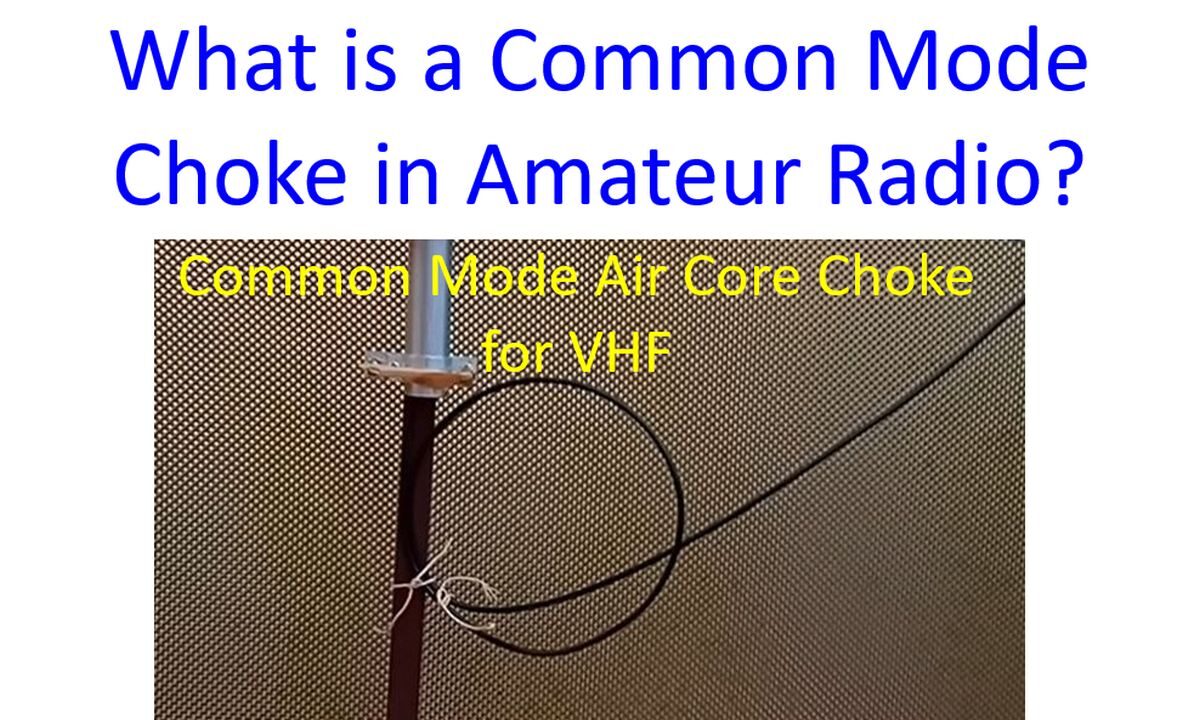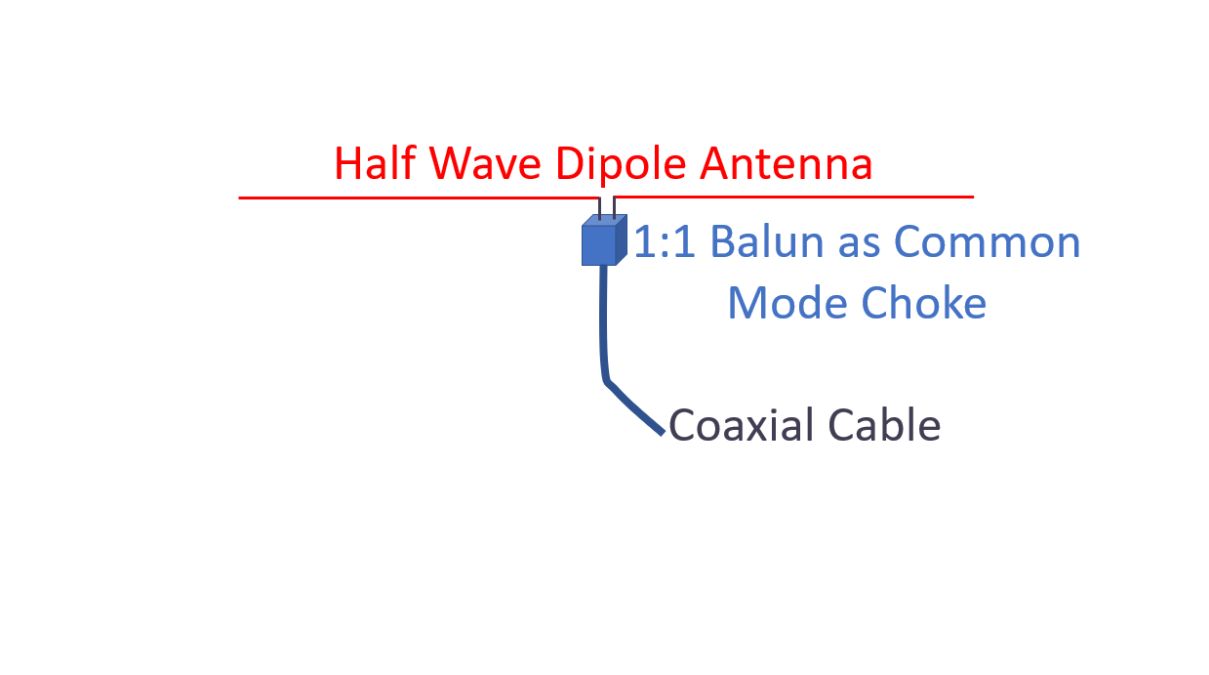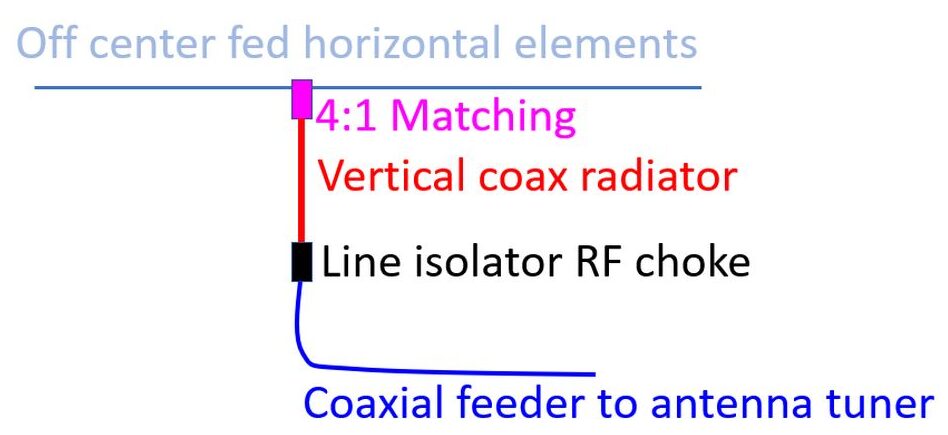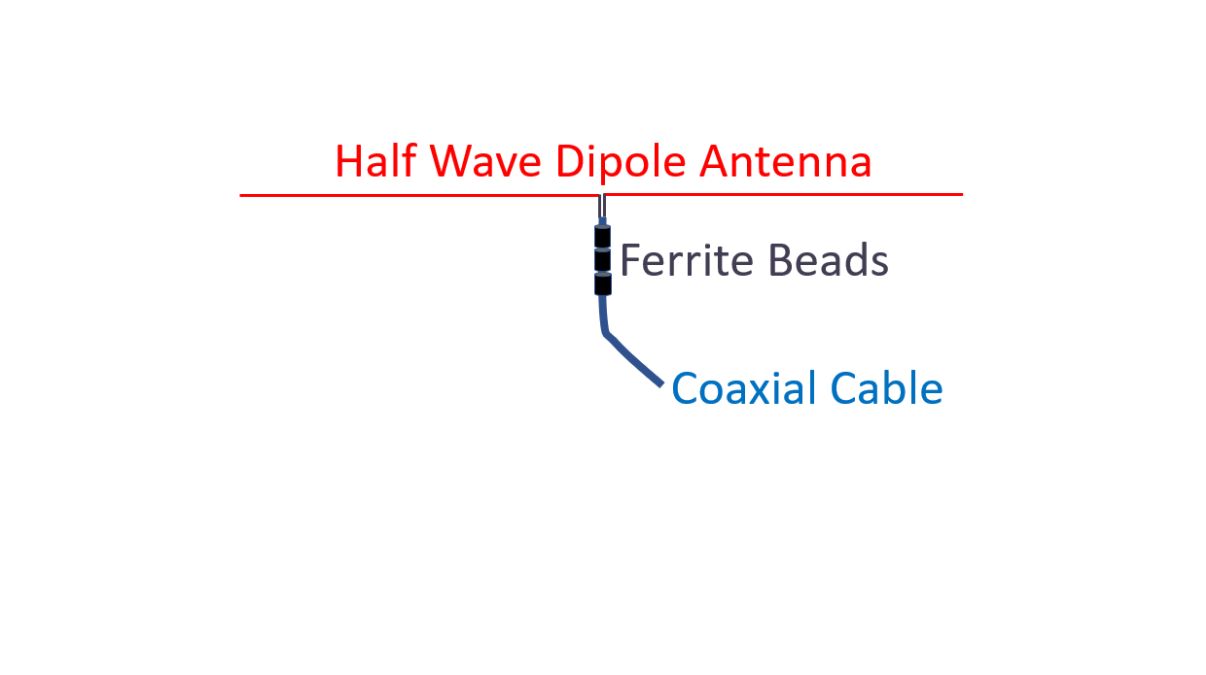What is a Common Mode Choke in Amateur Radio?
What is a Common Mode Choke in Amateur Radio?
Coaxial cable is often used as the feedline between an Amateur Radio and the antenna. Unlike an open line feeder which is also called a twin lead, with two wires running in parallel at a distance, which is a balanced transmission line, coaxial cable is an unbalanced transmission line. In the open feed line, current is fed to the antenna along one wire while the other wire gives the return path. The electromagnetic field of one wire is cancelled out by the return current in the other wire. Hence the open feed line does not radiate. In case of coaxial cable, the central conductor feeds the antenna. The shield of the coax, though useful in preventing external electromagnetic fields, makes it an unbalanced transmission line, with separate currents on its inner and outer aspects.

To prevent the shield of the coaxial cable from radiating electromagnetic waves, a common mode choke is needed at its antenna end. If that is not there, the radiofrequency current can come down along the shield to the ground connection of the Amateur Radio to which it is connected. This RF current can move through all conductors attached to it. You may get painful RF bites when you touch such metallic objects when running on higher powers. This RF current can also travel into the ground system of the building and even on to household equipments plugged in. This extensive ‘RF system’ can radiate electromagnetic waves and cause radiofrequency interference in the neighbourhood.

Common mode choke is also known as 1:1 balun, meaning balanced to unbalanced transition, when it is connected between a balanced antenna like a half wave dipole antenna and an unbalanced feeder like a coaxial cable. When used between an unbalanced antenna like an off center fed dipole like Windom antenna and a coaxial cable, it is known as 1:1 unun, meaning unbalanced to unbalanced. Another name for the common mode choke is line isolator.

Simplest way of implementing a common mode choke is giving coils to the coaxial cable at the antenna end, which I have done for my VHF antenna as can be seen in the picture. But at lower frequencies like HF, such a single turn in the coaxial cable will not be enough. You need about 12 turns of a cable like RG 213 with about 10 cm diameter to get 35 dB suppression of common mode current at 20 m. Remember that RG 213 is a rather thick cable.

Another way of implementing a common mode choke is putting ferrite beads over the coaxial cable. For higher suppression of common mode currents especially on lower bands, you need more ferrite beads. Increasing the number of the ferrite beads not only increases the cost, but also the weight at the antenna end, which can sag significantly if extra support is not given. Common mode chokes can also be built by winding coaxial cable or bifilar wires over a ferrite toroid. Only thinner of the coaxial cables can bend enough to be wound close to the ferrite toroid to give effective suppression of common mode current.